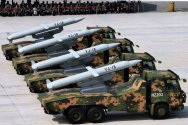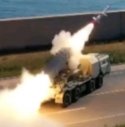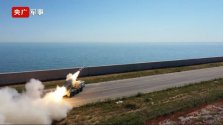I’m sorry but I mean Ka band. Ku band is also ok but Ka is better. There’re also some other technologies to penetrate plasma cloud but they’re much more than enough for AShBM. Maneuvering must be the prior choice in practice.
Or just destroying satellites, since OTH radars are not reliable with EW. PLA needs something like RQ-180 to keep surveying a large area even without satellites, and it’s another reminder for the importance of H-20, which can search and attack CBGs in a big area independently.
I cannot stop admiring VLO bombers. Given buddy refueling, H-20 can even penetrate air defense in peacetime and take some SIGINT operations in US mainland, that would be a treasure house of intelligence. Of course B-21 may also do some similar things in China.
As a conclusion, I always assume surveying a large area with sea-skimmer seekers is not so smart(LRASM) due to their low altitude, but AShBM seeker would benefit from altitude once other tech obstacles are cleared away.
Of course H-20 is of great importance. It and Type 095 are the two most important projects for China. However, they have other platform that can detect a carrier group in the event that satellites are destroyed or interfered with. GJ-11 is just the first generation of future and more capable UCAVs that China will have. It has the range to find a carrier group and keep itself hidden. There will be AEW UAVs that have very long detection range and be very stealthy. WZ-8 was probably created for the role of finding a carrier group. It is really hard to detect.
Think about it this way with respect to WZ-8. If a carrier group stays 1500 km off mainland due to fear of Chinese hypersonic AShM, then H-6N can venture further out from mainland with J-20 escort. As such, WZ-8 can be launched several hundred km further out and reach greater distance away from China and force carrier group to stay even further away.
As for B-21, the question is how close to Chinese air space it can get or intrude without being detected. As stealth technology get better, counter stealth technology via VHF/UHF radar and multi-static radars and networking will also get a lot better. If carrier itself cannot get close to mainland, then B-21 might have to encroach Chinese air space without escort. That would seem to be a very risky strategy given the counter stealth advancement that China has made.








